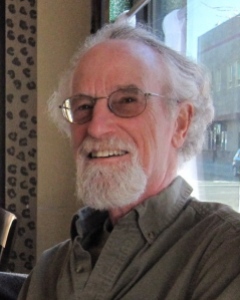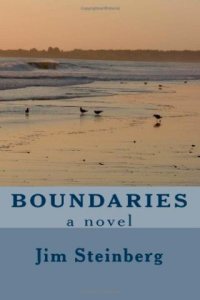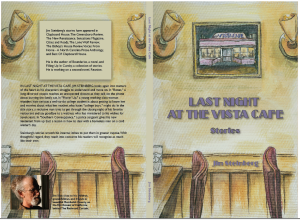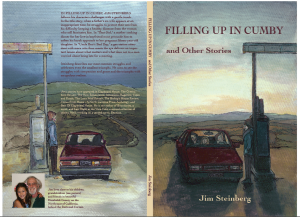
by susrene@gmail.com | Apr 18, 2017 | Ten Minute Tuesday, writers, writing
We all have at least one in our head. One critic that doesn’t shut up. He or She is the critic in the stands that Brene’ Brown often refers too. They aren’t supposed to matter because they do not get down in the arena with you. They don’t wrestle with the world and come up dirty. This critic tries to stay above it all. Always criticizing but never trying. Since this is National Letter Writing month let’s write a letter to this critic, Tell this critic what you think of them. See who they are clearly in your mind. Man or woman? Insolent child? Think of this letter as standing up and addressing them directly. If they are a critic that is not willing to get down in the mire with you, do you fire them? Send them on vacation for a while? What do you want to say? I once wrote a letter to this critic firing them. He was a cranky old man in my head. One who was never happy with anything at all. It didn’t matter how good something was, HE did not like it. So I fired him. Now, I will warn you, since firing him, he does not come around as often, though a couple of new ones took his place. But everyone once in a while the cranky old man slips past my defenses and into my head once again like an employee who never gets the hint that he is doing terrible at his job. So I have to fire him again. Here is my letter to the critic in my head and how I fired him.
Dear Critic in the Stands,
I’m letting you go.
I’m saying good-bye to your harsh tones and your sandpaper words
that scrape away
the soft parts of my heart.
I’m turning away from you,
and
Leaving you standing with your arms crossed and
frown lines on your face
while tapping your foot.
This relationship is not working for me.
I do not enjoy having you shred my skin away,
expose the broken bones beneath
while you are up in the stands, keeping your hands clean
and your bones safe.
I have made my list of the ones who matter,
tucked it in my pocket… the loved ones who get down in the mud with me.
So, I will tell you again.
I’m letting you go.
I’m saying good-bye.
Please leave the arena now,
you are fired.
Sincerely,
Susan
Like this:
Like Loading...
by The Creating Room | Dec 4, 2015 | Interviews, writers
On a writing retreat a year and a half ago in a place called the Lost Coast, on the Mattole River, I met writer, Jim Steinberg, author of two short story collections and the novel, Boundaries. Jim is a quiet man with a friendly disposition. He is warm and welcoming and was always up early writing away, drinking coffee with one or two of us early birds. This last year at the retreat,
as we were chatting while I was laying out all the breakfast stuff, he said to me that he was just going to have his coffee. “Breakfast is a social affair,” he told me.
That to me, sums him up well; friendly, thoughtful of others around him, and when writing, his nose is to the keyboard, following the scent of his story line by line, scene by scene.
Why do YOU write? What motivates or inspires you to write?
I write to scratch itches. I feel the impulse rising from within, wanting attention, so I want to scratch it. I follow impulses telling me there is a story that is waiting.
In my writing, I follow the words of Richard Ford, author of Independence Day, “I want everything I write to be useful.” My writing is serious fiction; I want to say something useful to my readers. I want to connect to them.
Writing is how I communicate with the world, like a long-term conversation between writer and reader. In writing, it is my hopes that I may also inspire others to have the grist to be creative and find their story.
As a teacher, I was getting by but knew it would to learn more about storytelling. I enrolled in a summer institute at Humboldt State University: the Redwood Writing project for teachers who teach writing.
During the course, I fell in love with writing stories. Eventually I turned one assignment into a work of fiction that now appears in my second short story collection: Last Night At The Vista Cafe, Stories.
2) In discussing “the genesis of a story” you said it is something “seeking a place of greater repose?”
a) What does this mean to you?
b) How do you begin?
c) What is it to “follow your nose?”
When I am responding to an impulse, it is a chance to visit, or revisit, memories. In this way, I settle them. I put them to rest within me, in a better relationship, making my peace with whatever emotional or psychological aspect that came to the surface. I pull the essence of the failed marriage or relationships, childhood experiences, or from mediation experiences, to spring into the fictional story. It never looks the same as the real experience, and the fiction does not rely on the actual account, but the greater truth that needed to be settled, is allowed to be expressed and peace made.
Let me give an example of “following my nose.” In my short story collection Filling up in Cumby and Other Stories, there is one titled “Highway 47.” It began as a story of a man unhappy in his marriage about to get stuck on a highway in a snowstorm. Inside a cafe, a young boy sets the table for the man. His mother owns the restaurant. The mother reluctantly offers up her hide-a-bed, and the story turns toward two strangers deciding whether they are going to have an affair. However, the story takes a turn when he begins talking to the child, who had no father, during the evening. The friendship that develops between the man and the child, rather than the dreamed about affair, becomes more important for the man than what he was dreaming of.
Character, setting, a conflicted situation, or the emotions from real life become a springboard into entirely fictional people and storylines. I want to give free rein to my imagination. A once famous writer, I forget who, said “write your stories as if everyone has been dead for one hundred years. Good advice for discovering the emotional truth of a story. I find the emotional truth by pulling the fiction from my imagination.
This is what I mean by following my nose. I allow the characters to determine and change the path of the story. It’s their story.
If you ask how I begin, I sit at the keyboard with my impulse, start writing and see what comes. I don’t outline, write a synopsis or do character sketches. I give the story the room to breath as it needs to.
My novel Boundaries is a blending of two stories that decided they needed to be the same book. They are incidents from from two different experiences. The first was a law case I had when practicing law in the 1970’s in Colorado Springs, working for a legal service that served impoverished clients. The second was a chance encounter I with a woman I met in a restaurant on the north coast of California during unusual circumstances in the 1980’s. The client in the first experience was very powerful and influenced me greatly in the case and in my practice. The woman in the restaurant really got my attention. I combined them into a single character. In doing so, I created a story about a lawyer and a client having a very unusual relationship.
3) Please tell me a bit about your video series on your blog.
There are twelve videos in total. Ideally one comes out each week but son has graciously been helping me during his free time, so we do our best to get them out. They are conversations between myself and poet Bob Davis. They are conversations on what it means to be human, meant to bring the writer and reader together on the same conversation. We talk about the genesis of story, writing to explore the story, revision, and allowing the story to happen. Here is the list of topics:
1. Genesis Of A Story
2. More On Genesis Of A Story
3. Take A Ride On Your Work
4. I Love The Exploration
5. A Theme Discovered: “Highway 47” – (a short story)
6. A Theme Discovered: “Uncle Eno’s Bad Day” – (a short story)
7. Always Fiction, Always True: “An Apple Totem” (a short story)
8. Genesis Again: “Boundaries,” A Novel
9. A Crystal Memory
10. Revision
11. Reading Stories Aloud
12. Writing Or Reading? What Do You Prefer?
4) What kind of conversations would you ideally like to have with writers and readers?
What are your favorite topics of discussion with other writers and with readers?
I want to create a virtual salon or cafe for writers and readers to discuss fiction in the same way you may sit in a coffee shop with a writers group or a readers group and discuss topics related to story. Writers and readers are all storytellers, and we can give and take from one another in a conversation that includes both. I want conversations about the flesh and bones and bumps and scars that I think serious stories should include.
5) What is it for the story to have “real flesh and bones with bumps and scars?”
It is to examine what really hurts people. I write about characters who struggle with misfortune and difficult experiences. For example, characters who dwell on a moral edge, making the wrong choices for perhaps honorable reasons. I stay away from stereotypes, writing instead from the perspective that not everything is pretty. I want to expose their wounds to the reader, allowing them to watch how the character deals with them. It is my hope that readers will see the characters with an “unconditional positive regard”, keeping them open to compassion and empathy towards the character.
6) Tell me a bit a you next novel, Third Floor.
Third Floor is the story of fraternal twins, Rachel and Joseph. It begins when they are seven years old. There are issues between the two parents, and in an effort to escape the nighttime fights, Rachel creates a retreat on the third floor. One night Joseph joins her when he discovers she isn’t in her room. They continue to hide out there. Rachel is very strong, and Joseph relies on her strength. I am hoping to tell it in seven-year increments, but in following my nose, that may change. Eventually the twins will be separated and will come together when their father is ill. At least that’s what I expect thus far. I never know for sure! To know the rest, you will have to wait until it is published next year.
7) What is your favorite, no holding back meal, and where is one place in the world you would like to travel to?
Meatloaf with mashed potatoes and molasses and green beans. That’s comfort food for me.
Once I wanted to travel to Kiev or Lithuania where my family is from, but now I want to go to the Scottish Highlands. It’s a landscape with a history that fascinates me.
 Jim Steinberg has been a lawyer, blacksmith, middle school teacher of English and Social Studies, college teacher of Criminal Justice, hippie, and director of basic law enforcement training at a community college. He now divides most of his time between his loved work as a mediator (thirteen years in a small private practice in his home and in tribal courts in Northern California) and his greatest love of the last two decades, writing fiction. He has published one novel, “Boundaries,” and two short story collections: “Filling Up In Cumby And Other Stories,” and “Last Night At The Vista Cafe, Stories.” His current project is a second novel – “The Third Floor,” a story about twins, a brother and a sister.
Jim Steinberg has been a lawyer, blacksmith, middle school teacher of English and Social Studies, college teacher of Criminal Justice, hippie, and director of basic law enforcement training at a community college. He now divides most of his time between his loved work as a mediator (thirteen years in a small private practice in his home and in tribal courts in Northern California) and his greatest love of the last two decades, writing fiction. He has published one novel, “Boundaries,” and two short story collections: “Filling Up In Cumby And Other Stories,” and “Last Night At The Vista Cafe, Stories.” His current project is a second novel – “The Third Floor,” a story about twins, a brother and a sister.
Jim’s stories have appeared in Clapboard House, The Greensboro Review, The New Renaissance, Sensations Magazine, Cities and Roads, The Lone Wolf Review, The Bishop’s House Review, Voices From Home – A North Carolina Prose Anthology, and Best Of Clapboard House. He writes his stories to scratch the itches that rise up from within him, to answer the impulses that ask him to visit and lay them in greater repose. When these impulses arise, he finds himself at the beginnings of trails he knows he will follow with minimal planning and no synopsis, plot, timeline, or character description. He jumps right in and finds the stories, making each a discovery for him, the first reader.
Jim is a Fellow of the Redwood Writing Project of Humboldt State University and a founding member of the Lost Coast Writers’ Retreat, a week-long gathering on the Mattole River on the remote Northcoast of California. For the last fourteen years he has described this time in a close knit writers’ community as his best week of every year. He believes that writing stories is the best way he can get his hands around experience. He believes that the world would be a better place if everyone wrote stories because they all have them, and they are all worth passing on.
You can talk with Jim about writing stories on his blog: “Follow Your Nose Fiction, A Blog About Writing By A Guy Who Writes.”
Like this:
Like Loading...



 Jim Steinberg has been a lawyer, blacksmith, middle school teacher of English and Social Studies, college teacher of Criminal Justice, hippie, and director of basic law enforcement training at a community college. He now divides most of his time between his loved work as a mediator (thirteen years in a small private practice in his home and in tribal courts in Northern California) and his greatest love of the last two decades, writing fiction. He has published one novel, “Boundaries,” and two short story collections: “Filling Up In Cumby And Other Stories,” and “Last Night At The Vista Cafe, Stories.” His current project is a second novel – “The Third Floor,” a story about twins, a brother and a sister.
Jim Steinberg has been a lawyer, blacksmith, middle school teacher of English and Social Studies, college teacher of Criminal Justice, hippie, and director of basic law enforcement training at a community college. He now divides most of his time between his loved work as a mediator (thirteen years in a small private practice in his home and in tribal courts in Northern California) and his greatest love of the last two decades, writing fiction. He has published one novel, “Boundaries,” and two short story collections: “Filling Up In Cumby And Other Stories,” and “Last Night At The Vista Cafe, Stories.” His current project is a second novel – “The Third Floor,” a story about twins, a brother and a sister.


 Hello Everyone! I’m Susan: a Writer, Speaker, Coach and Creator.
Creativity and I have been friends since I was a kid. I was always involved in a creative project…from putting together neighborhood skits and plays, writing stories, dance, theater. I loved to play with my creative side from painting, photography, to writing...
Hello Everyone! I’m Susan: a Writer, Speaker, Coach and Creator.
Creativity and I have been friends since I was a kid. I was always involved in a creative project…from putting together neighborhood skits and plays, writing stories, dance, theater. I loved to play with my creative side from painting, photography, to writing... 